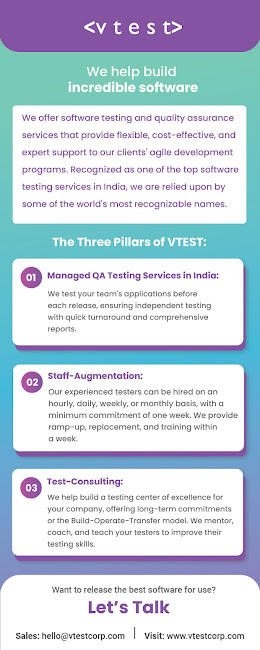Scalability Testing and Its attributes
Scalability Testing
Scalability
Testing is a non-functional test methodology in which an
application’s performance is measured in terms of its ability to scale up or
scale down the number of user requests or other such performance measure
attributes. Scalability testing can be performed at a hardware, software or
database level.
Advantages of Scalability
Testing:
Let’s discuss why a company may be better off
conducting scalability tests after all. Firstly, for trying to add users to a
system while oblivious of its capabilities under varying loads can prove a
perilous endeavour. Upon systems failure, stakeholder confidence can wane,
along with any hope of rising again. Secondly, you save a lot of money by
setting reasonable growth rates that ideally pay for themselves. Lastly, even
when selling a company or facing foreclosure, reducing resources while cutting
costs can be a controlled event. And this potentially saves the reputations of
everyone with the ailing business on their resumes.
Scalability
testing attributes:
Following
are the only few attributes out of many that considered during the scalability
testing
Ø Response Time
Ø Throughput
Ø Time {Session time, reboot time,
printing time, transaction time, task execution time}
Hits per second, Request per seconds, Transaction per seconds
Ø Performance
measurement
with number of users.
Ø Performance measurement under load.
Ø CPU usage Memory usage
Ø Network Usage {Bytes, packets,
segments, frames received and sent per sec, Bytes.( Read more….)

Comments
Post a Comment